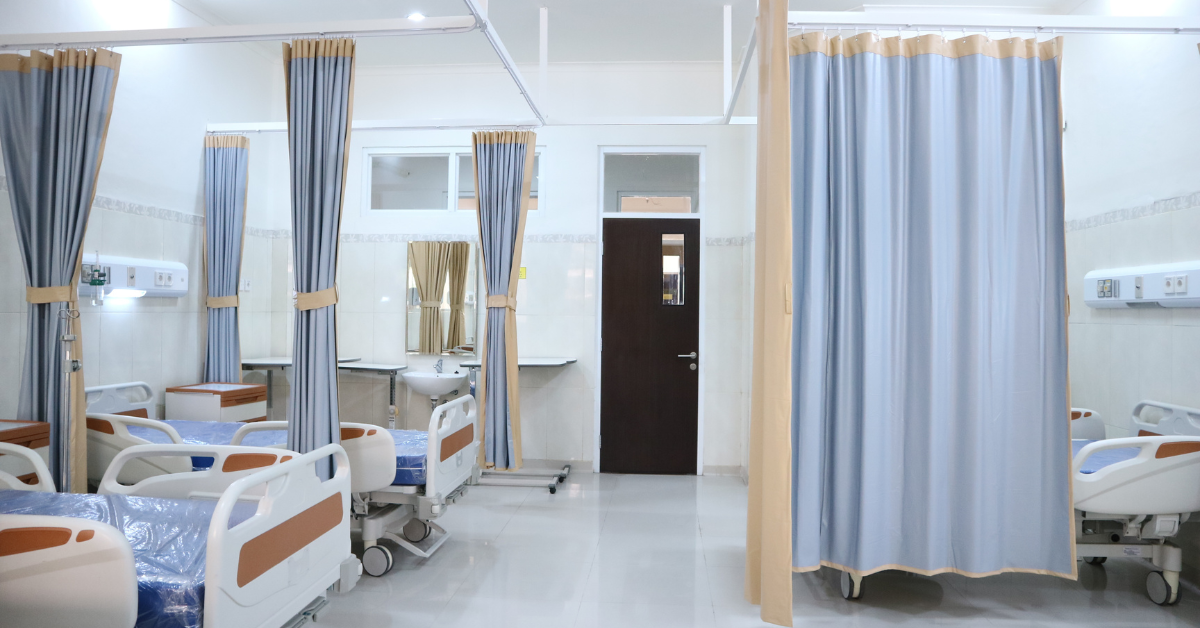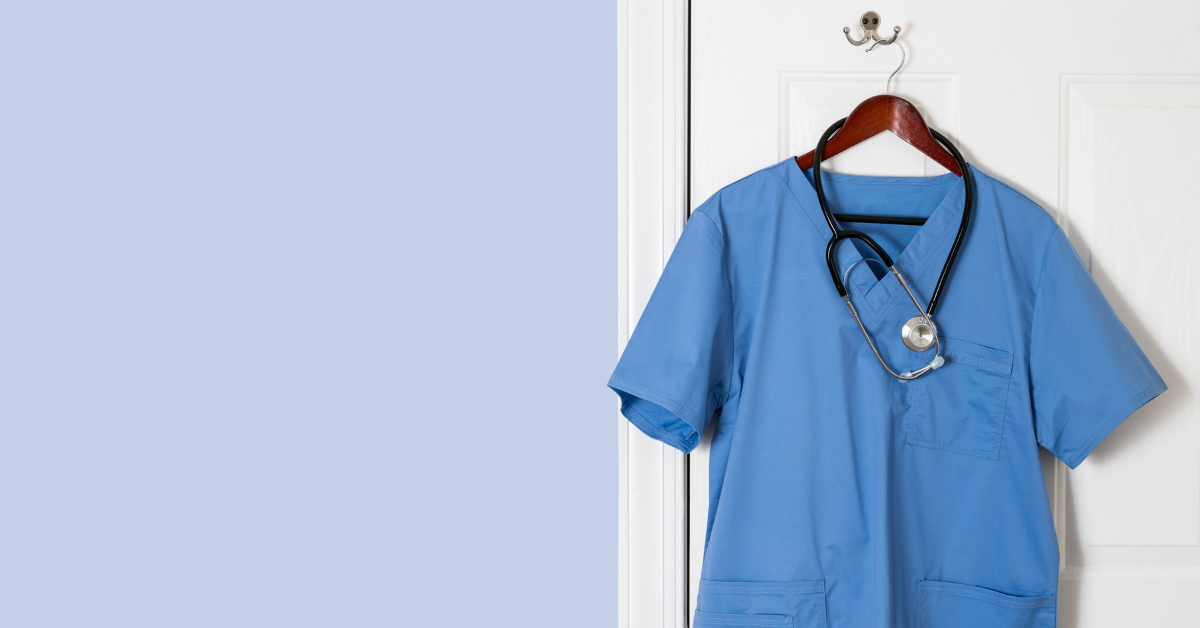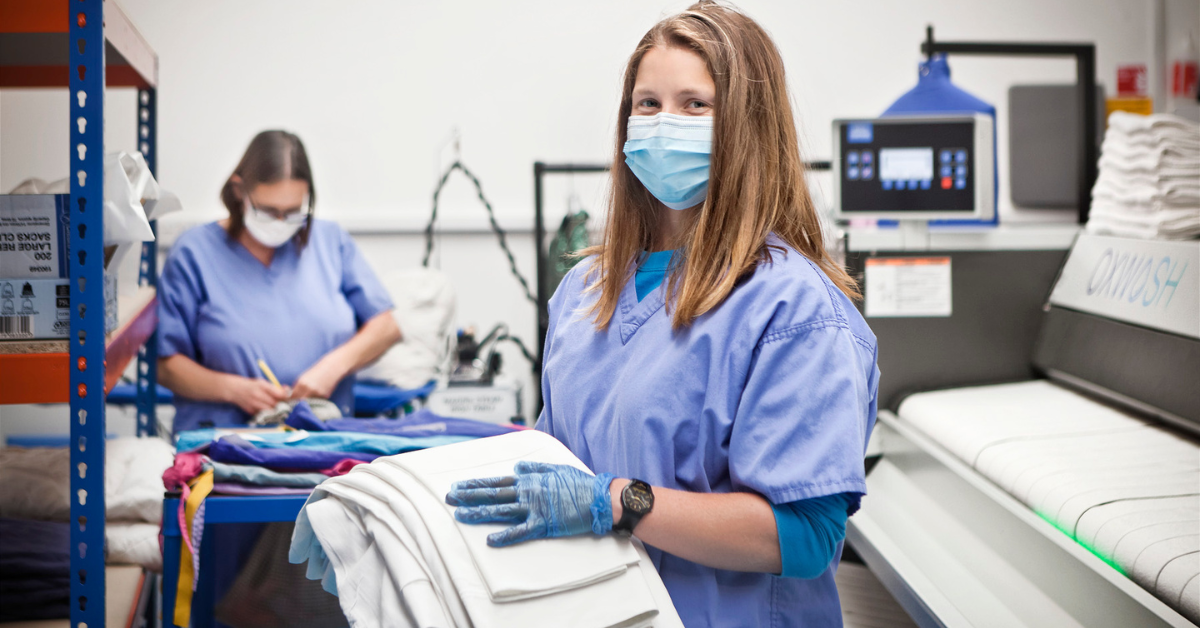Our sustainability report is now live and free to download!
Hospital laundry: A critical behind-the-scenes operation
Hospital laundry: A critical behind-the-scenes operation
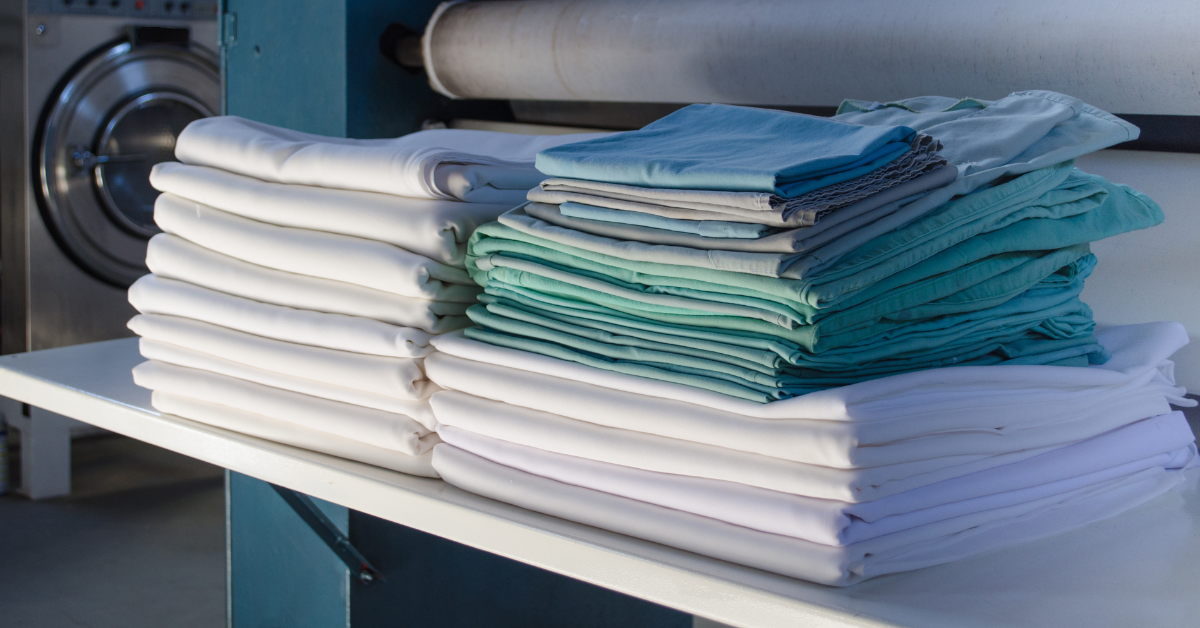

Business & Insights
Healthcare
Sustainability
In the intricate web of healthcare services, one crucial yet often overlooked component plays a pivotal role in maintaining hygiene and patient well-being: hospital laundry.
This behind-the-scenes operation is more than just about clean linens; it's a meticulous process governed by stringent standards to ensure the highest levels of cleanliness and infection control to keep patients safe.
The procedure of laundry in hospitals: Beyond clean sheets
Hospital laundry is not a simple chore; it's a systematic process that involves multiple steps to guarantee optimal cleanliness. The journey begins when used linens, blankets, and garments from patient rooms are collected in designated hampers or bins. The segregation of different types of linens is crucial to prevent cross-contamination and meet stringent healthcare laundry services standards.
Sorting:
The first step involves sorting the linens based on their fabric type, colour, and degree of soiling. This meticulous sorting is essential to ensure that each load receives the appropriate treatment during the washing process.
Pre-treatment:
Stains and heavily soiled areas are pre-treated before the actual washing begins. This step might involve the application of specialised stain removers or enzymatic cleaners to address specific types of stains commonly found in healthcare settings.
Washing:
Healthcare laundry services adhere to strict standards when it comes to washing hospital linens. Commercial-grade washers are used, and the water temperature is carefully regulated.
Drying:
After washing, linens are dried thoroughly at high temperatures. The heat not only contributes to the elimination of any remaining microbes but also provides a level of assurance against allergens.
Folding and packaging:
Once dried, the linens are meticulously folded and packaged. This step is crucial for maintaining the integrity of the clean linens until they reach their final destination – the patient's room.
Temperature considerations in hospital laundry
One of the critical factors in hospital laundry is the temperature at which the linens are washed. The use of hot water in the laundry process serves a dual purpose: it aids in the removal of stains and ensures effective disinfection.
The Health and Safety Executive suggests maintaining a temperature of 65°C for at least 10 minutes during the wash cycle or keeping it at 71°C for a minimum of 3 minutes to meet current healthcare laundry service standards. This elevated temperature is instrumental in killing bacteria, viruses, and other pathogens that might be present on the linens.
Due to the ozone cleaning technology we employ in cleaning linens at our site, we are able to wash at lower temperatures, saving considerable amounts of energy.
Cleaning agents in hospital laundry
Hospitals utilise specially formulated detergents and disinfectants designed to meet healthcare laundry services standards. These cleaning agents are chosen for their ability to remove stains, kill germs, and maintain the longevity of the linens.
Detergents:
High-quality, industrial-strength detergents are employed to break down and remove various types of stains commonly encountered in healthcare settings. These detergents are also effective in lifting bodily fluids and other contaminants from the linens.
Disinfectants:
To meet the stringent cleanliness requirements of hospitals, disinfectants are a crucial component in the laundry process. They play a vital role in eliminating any remaining pathogens, ensuring that the linens are not only visually clean but also microbiologically safe.
Decontamination of hospital linen
Decontaminating hospital linen is a non-negotiable step in the laundry process. The aim is not just cleanliness but the elimination of any potential pathogens that might pose a risk to patients and healthcare workers.
Ozone technology:
Some advanced laundry facilities leverage ozone technology as an additional layer of disinfection. Ozone, a powerful oxidising agent, is introduced during the wash cycle to further eradicate bacteria and viruses. This method aligns with the highest healthcare laundry services standards and provides an extra level of assurance in infection control. This is the process we use across many of our facilities.
Quality control measures:
Healthcare laundry services incorporate robust quality control measures to ensure that the linen meets the desired standards. This includes regular testing for cleanliness and the effectiveness of the disinfection process.
Meeting healthcare laundry services standards: A commitment to patient safety
The meticulous process of hospital laundry, governed by healthcare laundry services standards, is a testament to the healthcare industry's unwavering commitment to patient safety. Clean linens are not just a comfort; they are a critical component in preventing the spread of infections within healthcare facilities.
By adhering to specific temperature requirements, using specialised cleaning agents, and incorporating advanced decontamination techniques, hospitals ensure that their laundry operations contribute to a safe and hygienic environment for patients, staff, and visitors.
The seemingly mundane task of hospital laundry is, in reality, a sophisticated and critical behind-the-scenes operation. It is a manifestation of the healthcare industry's dedication to maintaining the highest standards of cleanliness and infection control. As patients rest on crisp, clean sheets, they can be assured that every step in the hospital laundry process aligns with the overarching goal of providing a safe and healing environment.
Let's talk laundry
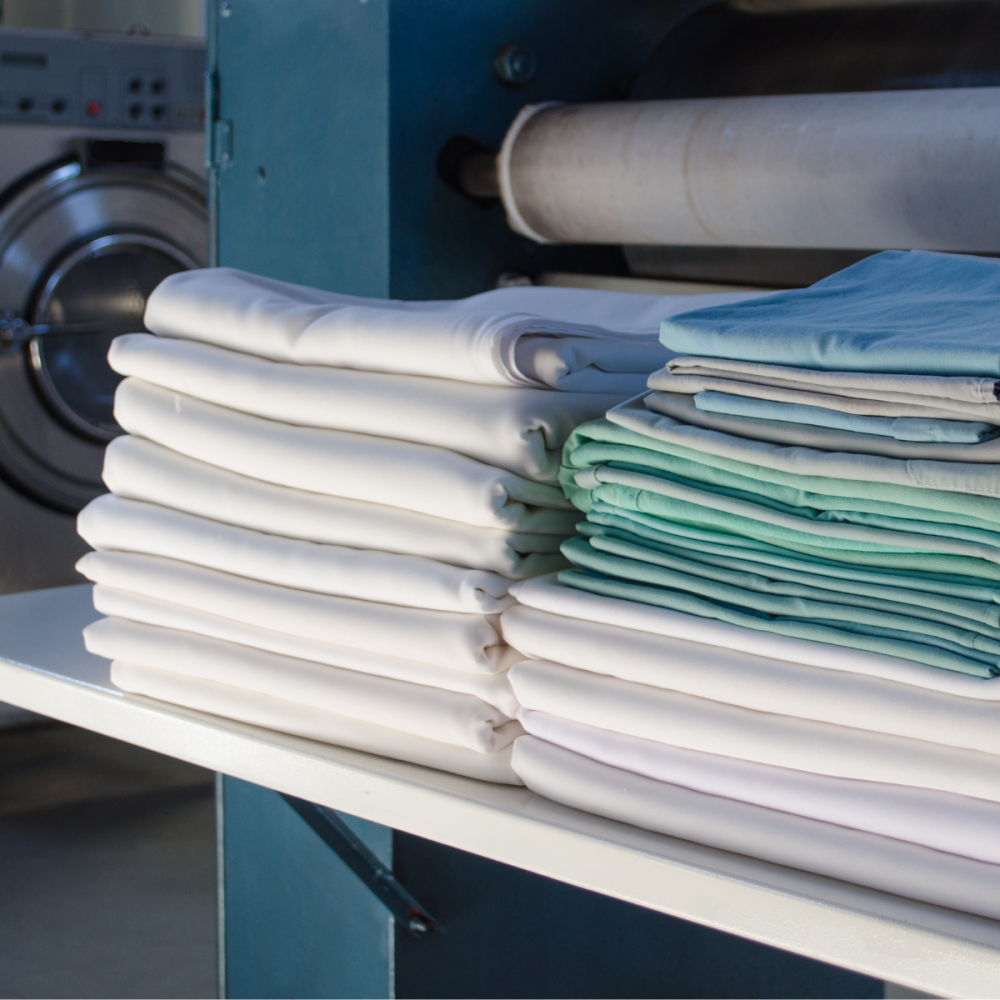

Related Articles


B Corp™ certified.
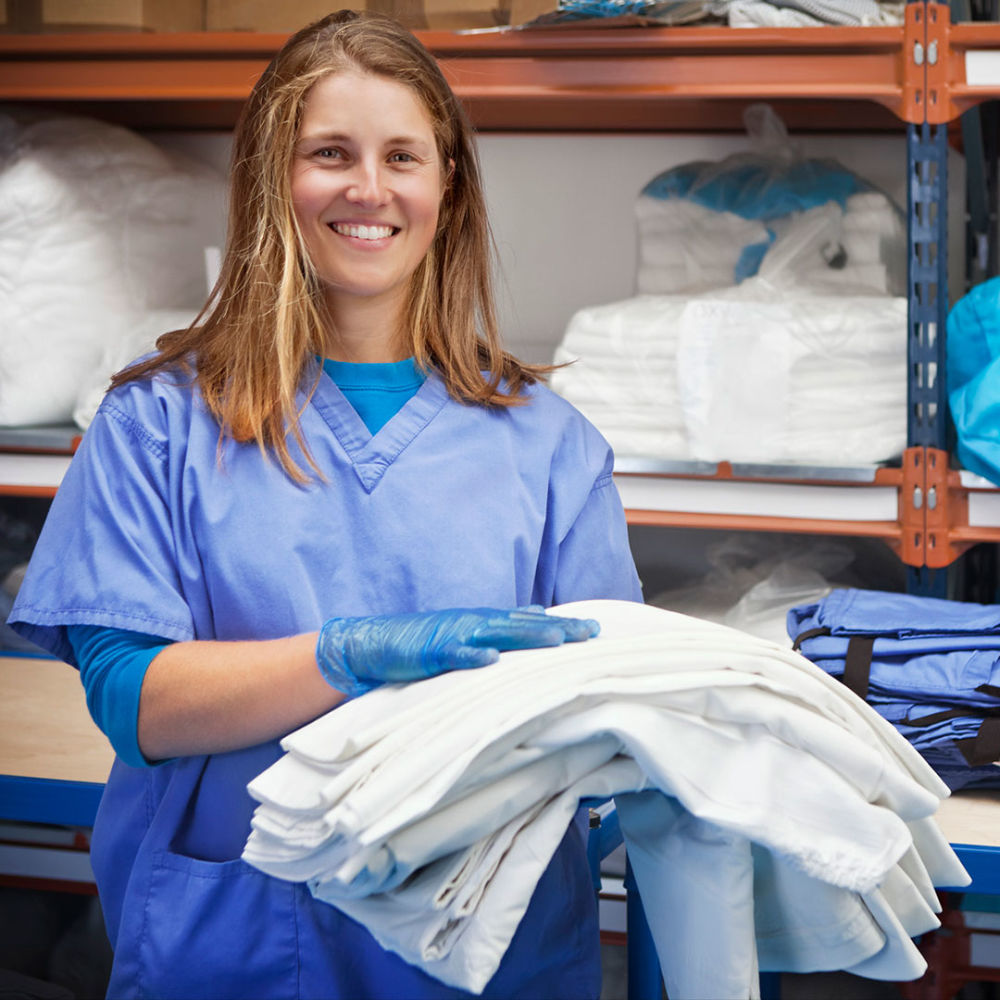

Surpassing NHS-grade disinfection.





